Complete A.I. & Machine Learning, Data Science Bootcamp
Loại khoá học: Development
Learn Data Science, Data Analysis, Machine Learning (Artificial Intelligence) and Python with Tensorflow, Pandas & more!
Mô tả
This is a top selling Machine Learning and Data Science course just updated this month with the latest trends and skills for 2023! Become a complete Data Scientist and Machine Learning engineer! Join a live online community of 900,000+ engineers and a course taught by industry experts that have actually worked for large companies in places like Silicon Valley and Toronto. Graduates of Andrei’s courses are now working at Google, Tesla, Amazon, Apple, IBM, JP Morgan, Meta, + other top tech companies. You will go from zero to mastery!
Learn Data Science and Machine Learning from scratch, get hired, and have fun along the way with the most modern, up-to-date Data Science course on Udemy (we use the latest version of Python, Tensorflow 2.0 and other libraries). This course is focused on efficiency: never spend time on confusing, out of date, incomplete Machine Learning tutorials anymore. We are pretty confident that this is the most comprehensive and modern course you will find on the subject anywhere (bold statement, we know).
This comprehensive and project based course will introduce you to all of the modern skills of a Data Scientist and along the way, we will build many real world projects to add to your portfolio. You will get access to all the code, workbooks and templates (Jupyter Notebooks) on Github, so that you can put them on your portfolio right away! We believe this course solves the biggest challenge to entering the Data Science and Machine Learning field: having all the necessary resources in one place and learning the latest trends and on the job skills that employers want.
The curriculum is going to be very hands on as we walk you from start to finish of becoming a professional Machine Learning and Data Science engineer. The course covers 2 tracks. If you already know programming, you can dive right in and skip the section where we teach you Python from scratch. If you are completely new, we take you from the very beginning and actually teach you Python and how to use it in the real world for our projects. Don't worry, once we go through the basics like Machine Learning 101 and Python, we then get going into advanced topics like Neural Networks, Deep Learning and Transfer Learning so you can get real life practice and be ready for the real world (We show you fully fledged Data Science and Machine Learning projects and give you programming Resources and Cheatsheets)!
The topics covered in this course are:
- Data Exploration and Visualizations
- Neural Networks and Deep Learning
- Model Evaluation and Analysis
- Python 3
- Tensorflow 2.0
- Numpy
- Scikit-Learn
- Data Science and Machine Learning Projects and Workflows
- Data Visualization in Python with MatPlotLib and Seaborn
- Transfer Learning
- Image recognition and classification
- Train/Test and cross validation
- Supervised Learning: Classification, Regression and Time Series
- Decision Trees and Random Forests
- Ensemble Learning
- Hyperparameter Tuning
- Using Pandas Data Frames to solve complex tasks
- Use Pandas to handle CSV Files
- Deep Learning / Neural Networks with TensorFlow 2.0 and Keras
- Using Kaggle and entering Machine Learning competitions
- How to present your findings and impress your boss
- How to clean and prepare your data for analysis
- K Nearest Neighbours
- Support Vector Machines
- Regression analysis (Linear Regression/Polynomial Regression)
- How Hadoop, Apache Spark, Kafka, and Apache Flink are used
- Setting up your environment with Conda, MiniConda, and Jupyter Notebooks
- Using GPUs with Google Colab
By the end of this course, you will be a complete Data Scientist that can get hired at large companies. We are going to use everything we learn in the course to build professional real world projects like Heart Disease Detection, Bulldozer Price Predictor, Dog Breed Image Classifier, and many more. By the end, you will have a stack of projects you have built that you can show off to others.
Here’s the truth: Most courses teach you Data Science and do just that. They show you how to get started. But the thing is, you don’t know where to go from there or how to build your own projects. Or they show you a lot of code and complex math on the screen, but they don't really explain things well enough for you to go off on your own and solve real life machine learning problems.
Whether you are new to programming, or want to level up your Data Science skills, or are coming from a different industry, this course is for you. This course is not about making you just code along without understanding the principles so that when you are done with the course you don’t know what to do other than watch another tutorial. No! This course will push you and challenge you to go from an absolute beginner with no Data Science experience, to someone that can go off, forget about Daniel and Andrei, and build their own Data Science and Machine learning workflows.
Machine Learning has applications in Business Marketing and Finance, Healthcare, Cybersecurity, Retail, Transportation and Logistics, Agriculture, Internet of Things, Gaming and Entertainment, Patient Diagnosis, Fraud Detection, Anomaly Detection in Manufacturing, Government, Academia/Research, Recommendation Systems and so much more. The skills learned in this course are going to give you a lot of options for your career.
You hear statements like Artificial Neural Network, or Artificial Intelligence (AI), and by the end of this course, you will finally understand what these mean!
Click “Enroll Now” and join others in our community to get a leg up in the industry, and learn Data Scientist and Machine Learning. We guarantee this is better than any bootcamp or online course out there on the topic. See you inside the course!
Taught By:
Daniel Bourke:
A self-taught Machine Learning Engineer who lives on the internet with an uncurable desire to take long walks and fill up blank pages.
My experience in machine learning comes from working at one of Australia's fastest-growing artificial intelligence agencies, Max Kelsen.
I've worked on machine learning and data problems across a wide range of industries including healthcare, eCommerce, finance, retail and more.
Two of my favourite projects include building a machine learning model to extract information from doctors notes for one of Australia's leading medical research facilities, as well as building a natural language model to assess insurance claims for one of Australia's largest insurance groups.
Due to the performance of the natural language model (a model which reads insurance claims and decides which party is at fault), the insurance company were able to reduce their daily assessment load by up to 2,500 claims.
My long-term goal is to combine my knowledge of machine learning and my background in nutrition to work towards answering the question "what should I eat?".
Aside from building machine learning models on my own, I love writing about and making videos on the process. My articles and videos on machine learning on Medium, personal blog and YouTube have collectively received over 5-million views.
I love nothing more than a complicated topic explained in an entertaining and educative matter. I know what it's like to try and learn a new topic, online and on your own. So I pour my soul into making sure my creations are accessible as possible.
My modus operandi (a fancy term for my way of doing things) is learning to create and creating to learn. If you know the Japanese word for this concept, please let me know.
Questions are always welcome.
--------
Andrei Neagoie:
Andrei is the instructor of the highest rated Development courses on Udemy as well as one of the fastest growing. His graduates have moved on to work for some of the biggest tech companies around the world like Apple, Google, Amazon, JP Morgan, IBM, UNIQLO etc... He has been working as a senior software developer in Silicon Valley and Toronto for many years, and is now taking all that he has learned, to teach programming skills and to help you discover the amazing career opportunities that being a developer allows in life.
Having been a self taught programmer, he understands that there is an overwhelming number of online courses, tutorials and books that are overly verbose and inadequate at teaching proper skills. Most people feel paralyzed and don't know where to start when learning a complex subject matter, or even worse, most people don't have $20,000 to spend on a coding bootcamp. Programming skills should be affordable and open to all. An education material should teach real life skills that are current and they should not waste a student's valuable time. Having learned important lessons from working for Fortune 500 companies, tech startups, to even founding his own business, he is now dedicating 100% of his time to teaching others valuable software development skills in order to take control of their life and work in an exciting industry with infinite possibilities.
Andrei promises you that there are no other courses out there as comprehensive and as well explained. He believes that in order to learn anything of value, you need to start with the foundation and develop the roots of the tree. Only from there will you be able to learn concepts and specific skills(leaves) that connect to the foundation. Learning becomes exponential when structured in this way.
Taking his experience in educational psychology and coding, Andrei's courses will take you on an understanding of complex subjects that you never thought would be possible.
See you inside the course!
Bạn sẽ học được gì
Become a Data Scientist and get hired
Master Machine Learning and use it on the job
Deep Learning, Transfer Learning and Neural Networks using the latest Tensorflow 2.0
Use modern tools that big tech companies like Google, Apple, Amazon and Meta use
Present Data Science projects to management and stakeholders
Learn which Machine Learning model to choose for each type of problem
Real life case studies and projects to understand how things are done in the real world
Learn best practices when it comes to Data Science Workflow
Implement Machine Learning algorithms
Learn how to program in Python using the latest Python 3
How to improve your Machine Learning Models
Learn to pre process data, clean data, and analyze large data.
Build a portfolio of work to have on your resume
Developer Environment setup for Data Science and Machine Learning
Supervised and Unsupervised Learning
Machine Learning on Time Series data
Explore large datasets using data visualization tools like Matplotlib and Seaborn
Explore large datasets and wrangle data using Pandas
Learn NumPy and how it is used in Machine Learning
A portfolio of Data Science and Machine Learning projects to apply for jobs in the industry with all code and notebooks provided
Learn to use the popular library Scikit-learn in your projects
Learn about Data Engineering and how tools like Hadoop, Spark and Kafka are used in the industry
Learn to perform Classification and Regression modelling
Learn how to apply Transfer Learning
Yêu cầu
- No prior experience is needed (not even Math and Statistics). We start from the very basics.
- A computer (Linux/Windows/Mac) with internet connection.
- Two paths for those that know programming and those that don't.
- All tools used in this course are free for you to use.
Nội dung khoá học
Viết Bình Luận
Khoá học liên quan

Đăng ký get khoá học Udemy - Unica - Gitiho giá chỉ 50k!
Get khoá học giá rẻ ngay trước khi bị fix.


![[NEW] Full-Stack Java Development with Spring Boot 3 & React](/uploads/courses/udemy/5338984_4d3a_5.jpg)


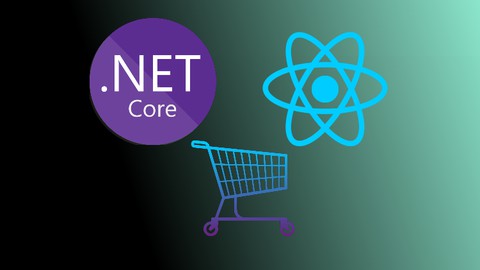
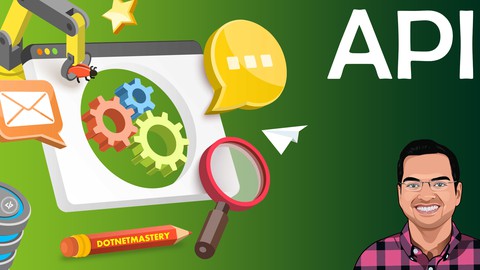
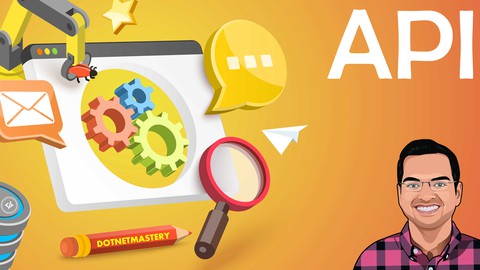

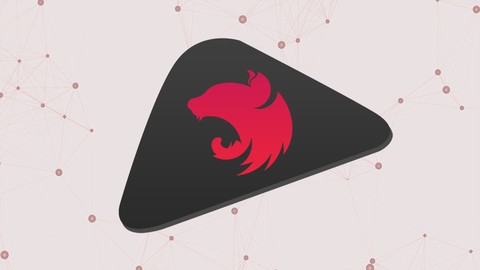

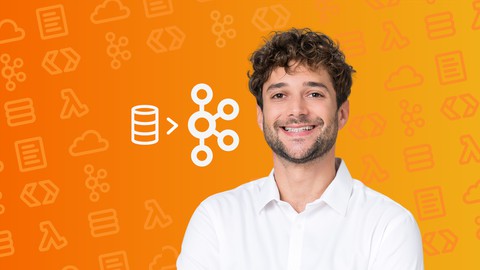




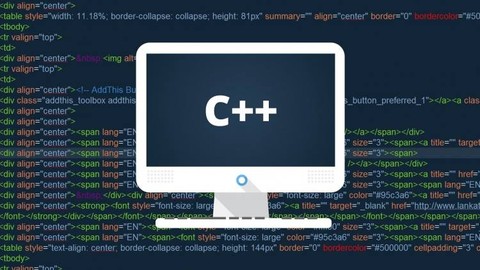

Đánh giá của học viên
Bình luận khách hàng